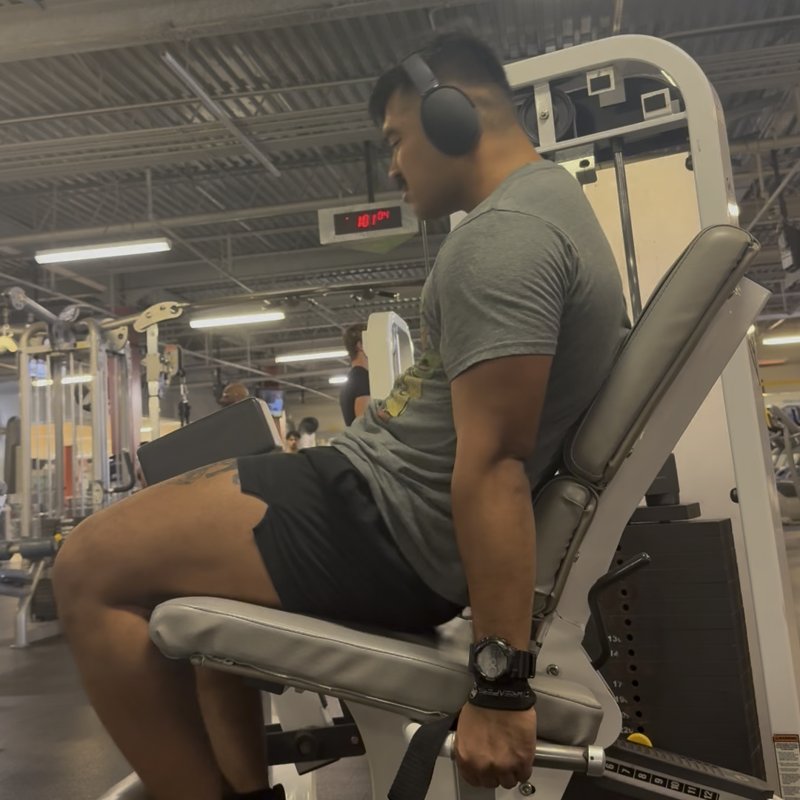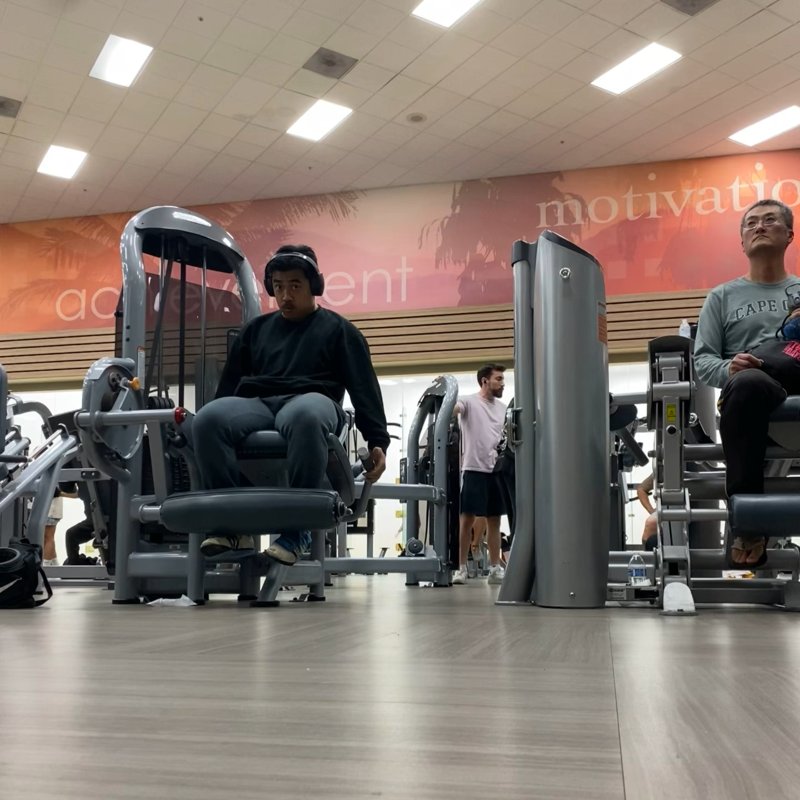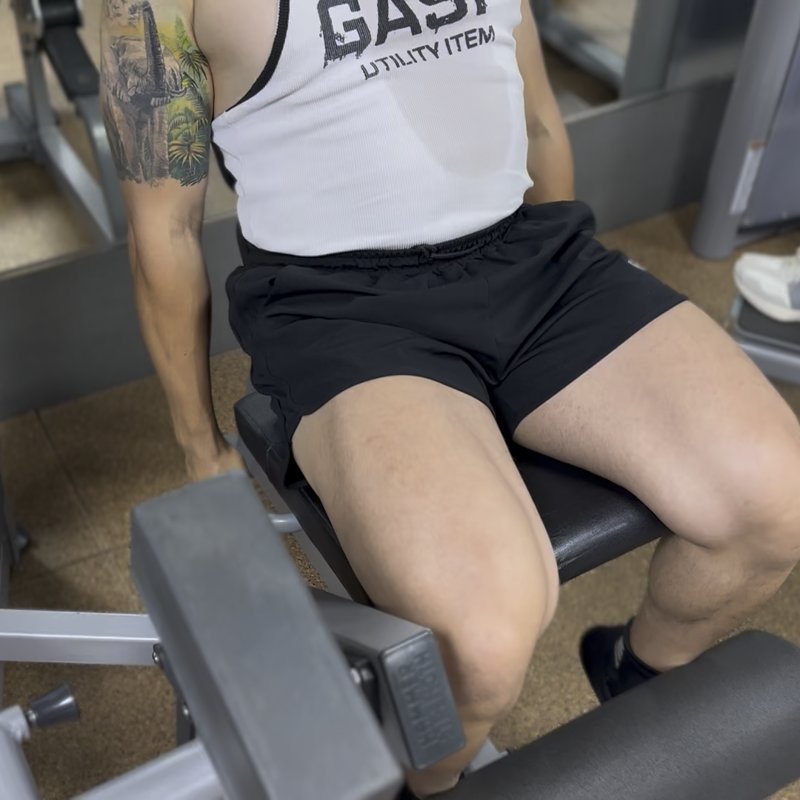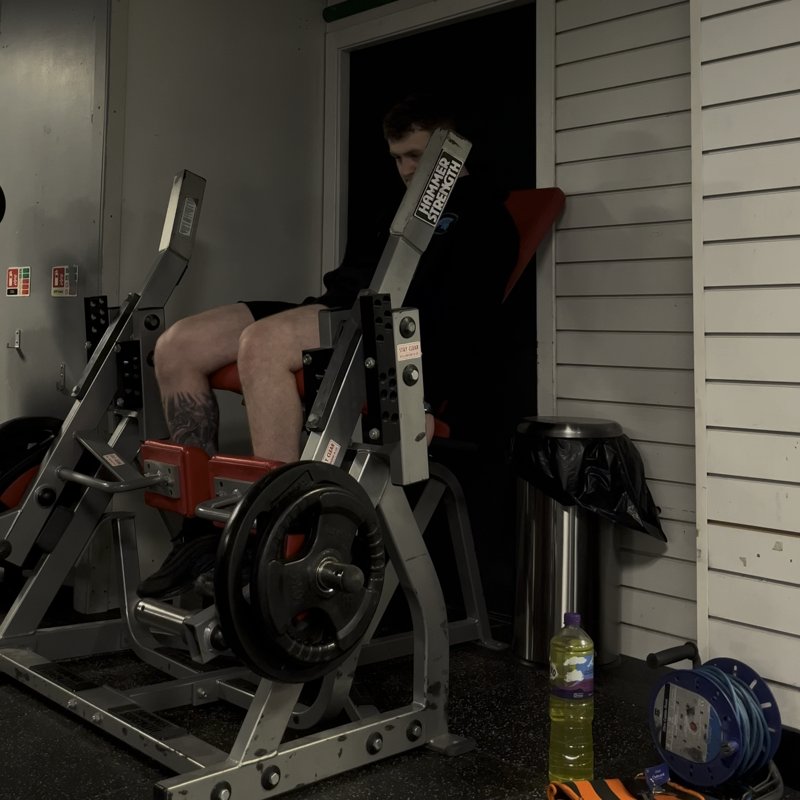Single-Leg Extension: The Ultimate Guide
The Single-Leg Extension is an isolation exercise that targets the quadriceps muscles by extending one knee at a time against resistance, allowing for focused development and correction of muscle imbalances.
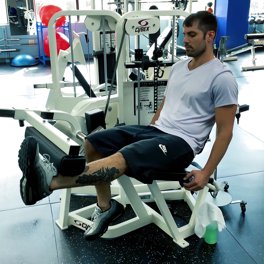
Quick Facts
Key Benefit
Isolated quadriceps development with focus on muscle symmetry
Primary Muscles
Secondary Muscles
Abdominals, Hip Flexors
Equipment
machine
Difficulty
Beginner
Type
Isolation
In This Guide
Ready to master the Single-Leg Extension?
Track your progress, see improvements over time, and build strength consistently.
Download GravitusThe Single-Leg Extension stands as one of the most effective isolation exercises for targeting the quadriceps muscles, offering unique benefits through its unilateral (one-legged) approach. While the traditional two-legged leg extension has long been a staple in fitness routines, the single-leg variation provides enhanced muscle focus, allows for the correction of strength imbalances, and can be particularly valuable for those rehabilitating from injury.
What makes the Single-Leg Extension especially valuable is its ability to prevent the stronger leg from compensating for the weaker one—a common issue in bilateral (two-legged) exercises that can reinforce existing muscle imbalances rather than correct them. By working each leg independently, this exercise ensures that both limbs receive appropriate stimulus for balanced development.
The focused isolation of the quadriceps—consisting of the rectus femoris, vastus lateralis, vastus medialis, and vastus intermedius—makes the Single-Leg Extension ideal for developing definition, enhancing muscle activation patterns, and complementing compound lower body movements like squats and lunges. Whether your goals include aesthetic development, rehabilitation, sports performance enhancement, or general strength building, the Single-Leg Extension provides targeted stimulus with excellent control over range of motion and resistance.
Benefits of the Single-Leg Extension
The Single-Leg Extension offers several distinct advantages over bilateral leg extensions and other quadriceps exercises.
Muscle Imbalance Correction
Working one leg at a time reveals and helps address strength discrepancies between the left and right quadriceps, potentially reducing injury risk and improving overall function.
Enhanced Muscle Activation
Focusing on a single leg often allows for greater neural drive and muscle fiber recruitment in the targeted quadriceps, potentially enhancing development.
Joint-Friendly Option
Using a single leg typically allows for lighter total loads while maintaining effective muscle stimulus, potentially reducing stress on the knee joint compared to heavy bilateral extensions.
Rehabilitation Application
The controlled nature and isolation of the movement makes it valuable for rehabilitation protocols following certain knee injuries or surgeries (when approved by medical professionals).
Improved Mind-Muscle Connection
The unilateral focus facilitates greater concentration on the working muscles, enhancing neuromuscular coordination and conscious control of the quadriceps.
Space for Compensatory Adjustments
If one knee has mobility restrictions or discomfort in certain ranges, the single-leg approach allows for customized execution without compromising the workout for both legs.
Proper Form & Technique
Setup
- Adjust the leg extension machine so the seat back supports your spine in a neutral position.
- Position yourself so the knee joint aligns with the machine's pivot point.
- Adjust the shin pad so it rests comfortably across your lower shin, just above your ankle.
- Grip the handles or sides of the seat for stability.
- Set the non-working leg either lightly on the floor or hanging freely in a comfortable position.
- Sit tall with shoulders back and core engaged.
Movement
- Begin with the working leg bent at approximately 90 degrees at the knee.
- Exhale as you extend your knee, pushing against the pad to raise the weight.
- Contract your quadriceps forcefully as you extend your leg.
- Extend until your leg is almost completely straight (avoid forcefully locking out the knee).
- Hold the contracted position briefly (1-2 seconds) at the top of the movement, focusing on maximizing quadriceps engagement.
Return
- Inhale as you slowly and controlled lower the weight back to the starting position.
- Maintain tension in the quadriceps throughout the lowering phase—don't let the weight drop quickly.
- Lower until you reach approximately 90 degrees of knee flexion (or slightly more if comfortable for your knees).
- Without pausing at the bottom, immediately begin the next repetition.
- After completing all repetitions on one leg, switch to the other leg.
Key Form Tips
Controlled Motion
Avoid using momentum or "kicking" the weight up—focus on smooth, deliberate movement throughout the entire range of motion.
Back Position
Keep your lower back pressed against the backrest throughout the exercise to prevent excessive arching that could stress the lumbar spine.
Full Contraction
Focus on squeezing your quadriceps at the top of the movement—visualize pushing through your heel while pointing your toes slightly upward for maximum activation.
Avoid Lockout
Extend to a nearly straight leg position but avoid forcefully "locking out" the knee at the top, which can create unnecessary joint stress.
Balanced Work
Ensure you perform the same number of repetitions with the same weight and technique on both legs to promote balanced development.
Tempo Control
Consider using a 2-1-3 tempo (2 seconds up, 1 second squeeze, 3 seconds down) to maximize time under tension and minimize momentum.
Muscles Worked
Primary Muscles
- Rectus Femoris: The most visible of the quadriceps muscles, running down the center of the thigh from the hip to the knee, it's heavily engaged during knee extension and is the only quad muscle that crosses both the hip and knee joints.
- Vastus Lateralis: The largest quadriceps muscle, located on the outside of the thigh, it's strongly activated during knee extension and contributes significantly to overall quad development and knee stability.
- Vastus Medialis: Located on the inner part of the thigh near the knee (often called the "teardrop" muscle), it's crucial for knee tracking and terminal knee extension, receiving focused work during the final degrees of extension.
- Vastus Intermedius: The deepest quadriceps muscle, lying beneath the rectus femoris, it works in coordination with the other quad muscles to extend the knee through its full range of motion.
Secondary Muscles
- Tibialis Anterior: The muscle along the shin receives some activation, particularly if you flex your foot upward (dorsiflexion) during the extension phase.
- abdominals: The abdominals and lower back muscles work isometrically to maintain proper seated posture throughout the exercise.
- Hip Flexors: Receive minor engagement for stabilization of the working leg, particularly the iliopsoas when lifting the leg for each repetition.
Common Mistakes and How to Fix Them
Using Excessive Weight
Going too heavy often leads to compromised form, reduced range of motion, and potential knee strain. Fix by selecting a weight that allows for complete control throughout the full range of motion with proper technique. Focus on feeling the quadriceps work rather than moving the heaviest possible load. Consider dropping the weight by 10-20% and focusing on perfect execution with an emphasis on the mind-muscle connection.
Lifting with Momentum
Using rapid, jerky movements to "kick" the weight up reduces muscle activation and increases joint stress. Implement a controlled cadence for each repetition—for example, 2 seconds up, 1-second pause at the top, and 3 seconds down. Visualize pushing against underwater resistance rather than kicking explosively. If you can't maintain this controlled tempo, the weight is likely too heavy.
Rising Off the Seat
Lifting the hips or buttocks off the seat during the extension indicates compensatory movement and reduces isolation effectiveness. Ensure your back maintains contact with the backrest throughout the movement. Grip the seat handles firmly to anchor your position, and if necessary, reduce the weight until you can maintain proper seated positioning throughout the exercise.
Insufficient Range of Motion
Not extending fully at the top or not lowering to approximately 90 degrees at the bottom limits muscle fiber recruitment. Focus on extending to an almost (but not quite) locked position at the top while avoiding excessive slamming at the bottom. If pain or mobility limitations prevent full range of motion, work within a pain-free range while gradually attempting to increase that range over time with proper warm-up and technique.
Improper Seat Adjustment
Having the knee joint misaligned with the machine's pivot point creates incorrect biomechanics and unnecessary stress. Take time to properly adjust the machine before beginning—your knee joint should align with the axis of rotation of the machine. The back pad should support your spine in a neutral position, and the ankle pad should rest comfortably just above your ankle joint. These adjustments may need to be different for each leg.
Neglecting the Eccentric Phase
Allowing the weight to drop quickly during the lowering portion sacrifices valuable training stimulus. Focus on controlled lowering, taking 2-3 seconds to return to the starting position. The eccentric (lowering) phase provides significant muscle development stimulus and should receive as much attention as the lifting phase. Think about resisting the weight rather than simply letting it fall back to the start position.
Exercise Variations
Resistance Variations
-

Resistance Band Single-Leg Extension
Using a resistance band anchored behind you instead of a machine, which provides accommodating resistance (increasing tension as you extend) and can be performed anywhere with minimal equipment.
-

Bodyweight Single-Leg Extension
Performed sitting on a bench or chair without added resistance, relying on the weight of your leg for resistance—ideal for beginners, rehabilitation, or warm-up purposes.
-

Ankle Weight Single-Leg Extension
Attaching a weight to your ankle for resistance when machines aren't available, allowing for a portable option that can be performed on any stable seat.
Technique Variations
-

Isometric Single-Leg Extension
Holding the extended position for an extended period (10-30 seconds) to increase time under tension and enhance neuromuscular control, particularly effective for rehabilitation and mind-muscle connection development.
-

Pulse Single-Leg Extension
Performing small, pulsing movements at the top extended position to increase time under tension and focus on peak contraction of the quadriceps.
-

Partial Range Single-Leg Extension
Focusing on either the bottom half or top half of the range of motion to target specific aspects of quadriceps development or work around mobility limitations.
-

Tempo-Enhanced Single-Leg Extension
Manipulating the speed of different phases of the movement, such as using a very slow (4-5 second) eccentric phase followed by a more rapid concentric phase to emphasize different aspects of muscle development.
Combination Variations
-

Single-Leg Extension to Leg Press Superset
Immediately following single-leg extensions with single-leg presses to create comprehensive quadriceps fatigue and maximized growth stimulus.
-

Alternating Single-Leg Extensions
Performing alternating repetitions between legs without rest, which increases overall workout efficiency while maintaining constant tension on the quadriceps.
-

Pre-Exhaust Technique
Performing single-leg extensions immediately before compound lower body exercises like lunges or split squats to pre-fatigue the quadriceps and increase their recruitment during the compound movement.
Frequently Asked Questions
The safety of Single-Leg Extensions for your knees depends on several factors including your individual knee health, technique, and how you program the exercise. For many individuals with healthy knees, properly performed single-leg extensions with appropriate weight can be a safe and effective quadriceps exercise. The single-leg version actually offers potential advantages over bilateral extensions, as it typically involves less total load while still providing effective stimulus. That said, certain considerations should guide your approach. First, avoid excessive weight that causes form breakdown or jerky movements. Second, control the eccentric (lowering) phase rather than letting the weight drop. Third, consider working in a slightly limited range of motion (avoiding the last 10-15 degrees of extension) if you have existing knee issues. Always warm up thoroughly before performing the exercise. If you have a history of knee injuries, patellar tendinitis, or other knee conditions, consult with a healthcare professional before incorporating this exercise. Many physical therapists actually use modified versions of this movement in rehabilitation protocols, suggesting its potential value when properly executed.
Single-Leg Extensions differ from traditional bilateral extensions in several key ways. The most obvious difference is that they allow you to identify and address strength imbalances between legs that might go unnoticed in bilateral work, where the stronger leg can compensate for the weaker one. From a loading perspective, single-leg work typically allows you to use approximately 60-70% of the weight you'd use for bilateral extensions (per leg), which can reduce overall joint stress while maintaining effective muscle stimulus. Many lifters report better mind-muscle connection and quadriceps activation when working one leg at a time, as it allows for greater mental focus on the working muscle. Single-leg variations also provide greater range of motion customization—if one knee has mobility restrictions or discomfort in certain ranges, you can adjust accordingly without compromising the workout for both legs. From a time efficiency standpoint, bilateral extensions may allow you to complete your sets more quickly. Both variations have their place in a comprehensive program, with single-leg extensions being particularly valuable for addressing imbalances, rehabilitation, and focused muscle development.
The optimal placement of Single-Leg Extensions in your workout depends on your training goals and overall program design. For quadriceps hypertrophy (growth), consider placing them after your primary compound movements (like squats or leg presses) as a targeted isolation exercise to further fatigue the quadriceps. This approach ensures you have sufficient energy for the technically demanding compound lifts while still allowing quality work on the extensions. Alternatively, for a pre-exhaustion approach, you might perform Single-Leg Extensions before compound movements to pre-fatigue the quadriceps, potentially increasing their recruitment during the subsequent exercises (though this may reduce the total weight you can handle on those exercises). For rehabilitation or correction of muscle imbalances, Single-Leg Extensions might be given priority early in the workout when you're fresh and can focus on quality movement patterns. Regarding frequency, most trainees benefit from incorporating them 1-2 times weekly as part of a comprehensive leg training program. For a balanced approach, consider alternating between workouts where they appear early in the sequence and sessions where they come later, providing different stimulus patterns over time.
Several effective strategies can increase the difficulty of Single-Leg Extensions without adding weight, which is particularly valuable if you're limited by equipment availability or joint concerns. First, manipulate tempo—slowing down the movement, particularly the eccentric (lowering) phase to 4-5 seconds, dramatically increases time under tension. Second, incorporate brief isometric holds at the point of peak contraction, maintaining the fully extended position for 3-5 seconds while intensely contracting the quadriceps. Third, implement pulse repetitions by performing small, partial movements at the top extended position to create additional burning sensation and fatigue. Fourth, reduce rest periods between sets or implement drop sets by immediately performing a set with your non-dominant leg after fatiguing your dominant leg without rest in between. Fifth, try partial repetitions focusing on either the most challenging portion of the range of motion or the portion where you typically feel weakest. Finally, consider pairing Single-Leg Extensions with complementary exercises in supersets or tri-sets—for example, immediately following them with walking lunges and goblet squats—to create comprehensive quadriceps fatigue without requiring heavier weights on any individual exercise.
While it might seem logical to perform more repetitions with your weaker leg to address imbalances, the most effective approach typically involves performing the same number of repetitions with both legs but potentially giving the weaker leg priority in your training sequence. Start with your weaker leg when you're fresh, which ensures it receives maximum focus and effort. Use the performance of your weaker leg to determine the weight and repetition target for both sides—whatever your weaker side can handle with proper form becomes the standard for both legs. This approach prevents the stronger leg from continuing to advance disproportionately while the weaker one catches up. For significant imbalances (more than approximately 10% difference in strength), consider occasionally adding an extra set for the weaker leg at the end of your workout. Monitor progress over time, as imbalances should gradually diminish with consistent training using this approach. Remember that some natural strength difference between dominant and non-dominant sides is normal and not necessarily problematic, but addressing substantial imbalances can improve overall function and potentially reduce injury risk.
Video Demonstrations
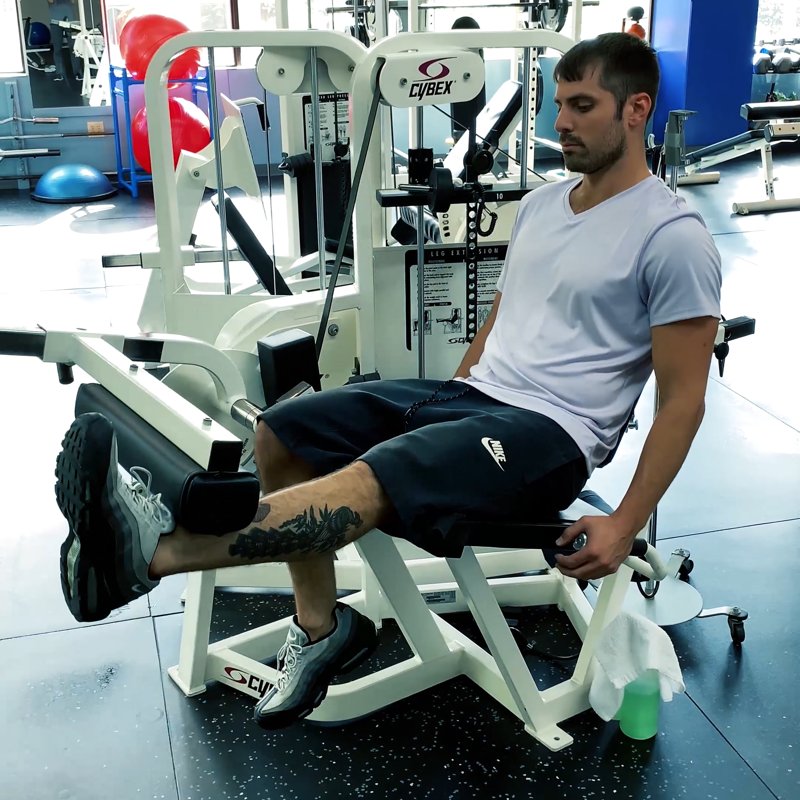
Log in to watch video demonstrations
Login to Watch3 video demonstrations available
Find more video demonstrations in the Gravitus app
Tips from the Community
-

Hold for about 2 sec at the top and slowly go down
Track your progress with Gravitus
Download Gravitus to log your workouts, track your progress, and join a community of fitness enthusiasts.

Helpful Resources
One Rep Max Calculator
Find your one rep max for any exercise without maximal testing. Essential for developing effective strength training programs.
Calculate 1RMWorkout Programs
Follow structured workout programs created by fitness professionals to maximize your strength and muscle gains.
View Programs
